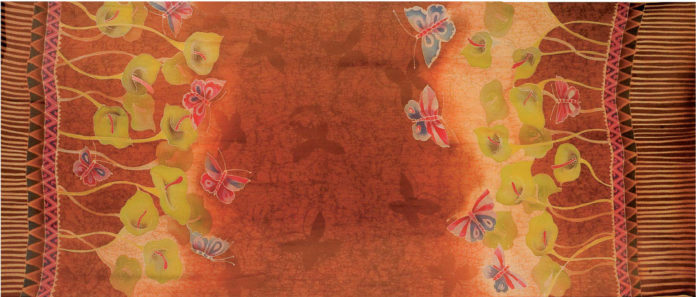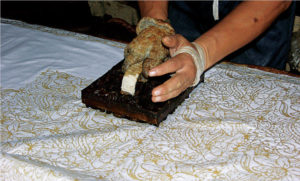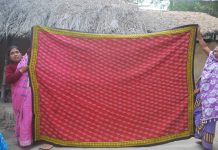
Batik is a wax-resist textile, produced mainly in the east coast states of Terengganu and Kelantan. The craft was pioneered in Malaysia during the 1920s by Haji Ali of Terengganu and Haji Che Su of Kelantan. Initially, the two produced batik-like printed fabrics known as kain pukul or kain terap using carved wooden stamps. Following visits to Java, Indonesia, in the 1930s, they introduced the art of wax-resist batik making using metal waxing stamps called sarang. Two of the most celebrated sarang makers today are Zakaria Ismail of Terengganu and Md. Ghani bin Mat of Kelantan.
The batik cap (stamped/printed batik) they made sparked a thriving cottage industry in the east coast. Subsequently, the batik sarong became an indispensable garment, worn mainly by women as a wrapped skirt for daily use. Batik sarongs were also used as head coverings, bathing cloths, baby hammocks and wrapping cloths.
Although batik is considered a utilitarian cloth, it can also be worn on special occasions. Malay, Nyonya and Chitty women wear their finest batik sarongs with a baju kebaya top fastened with brooches and a matching shawl when attending weddings and celebrations. In the 1960s, batik began to be made by the yard so that it could be tailored into traditional attire as well as Western-style shirts and dresses. Known as batik ela, it was also used to make household items like bedspreads, tablecloths and cushion covers.

Another type of batik, batik lukis/canting (hand-drawn batik) emerged in the 1970s. One of its first champions was Tunku Zubeidah Abu Bakar, owner of the Kutang Kraf batik atelier. The batik lukis technique employs a copper stylus or canting for waxing patterns freehand. Dyes are then applied to the base cloth—either cotton, silk, rayon, voile or organza—with a brush. By the early 1980s, batik tulis had become an integral part of Malaysian culture and the choice for formal functions.
Today, batik remains a thriving industry, especially in Terengganu and Kelantan. Visitors can see and purchase batik cap and batik lukis at the Kuala Lumpur Craft Complex, as well as at numerous outlets in Terengganu and Kelantan.




